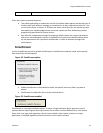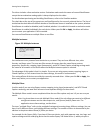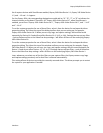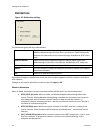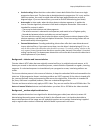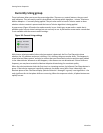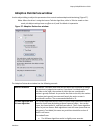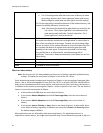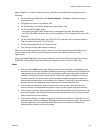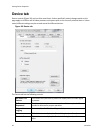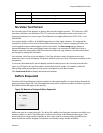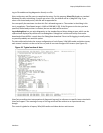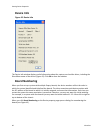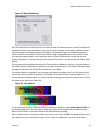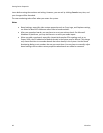Osprey 240e/450e User Guide
ViewCast 41
Motion Adaptive – 2-frame. Once that is done, other factors to reduce processing time are the
following:
Set Deinterlacing to Off rather than Motion Adaptive – 2 Frame for absolute minimum
processing time.
Set gamma correction to the default, 100.
For SECAM video, set the hue adjustment to the default, zero.
For 525-line (NTSC) video, either:
Set Square Pixel (640 x 480) reference size, and capture full sized, 640 x 480 video
Set CCIR (720 x 480) reference size, set Source Width to 720, and capture full sized, 720 x
576 video
For 625-line (PAL/SECAM) video, set CCIR (720 x 576) reference size, set Source Width to
720, and capture full sized, 720 x 576 video.
Set the client application for YUY2 color format.
Turn off logos and on-video caption rendering.
After you take these steps, latency will be 1 msec or less if the capture destination buffers are in
system memory (they will be in system memory except in some direct-render-to-screen
applications).
When you enable diagnostics, the latency is shown in a line of the form, latency per frame msec =
0.8554164, meaning that video frame delay from capture to return to client is 0.85 msec.
Notes
When you select Auto mode, some kinds of content cause the driver to frequently switch
between Inverse Telecine and Motion Adaptive processing. Content such as title sequences
and commercials are often telecine, but cuts between scenes generally break the telecine
sequence, forcing the driver to resynchronize. It takes it a number of frames to lock on to
the new sequence. The driver drops back to the Motion Adaptive algorithm as soon as it
becomes aware that telecine sync has been lost. However, it may take it several frames to
discover that this has happened; these frames are not correctly deinterlaced.
If the content is consistently telecine, that is pure movie content, then either Auto or
Inverse Telecine is recommended for perfect recovery of the original progressive format.
If the content is telecine with post-detelecine video-based editing, Auto mode results in the
best overall quality – but several frames may not be deinterlaced every time the pull down
phase sequence has to be relocked.
If the content format is a rapidly changing mix of telecine and video, or is all video, or is of
unknown type, the Motion Adaptive setting gives the most consistent results. The quality of
telecine sequences is not the best possible, but there are no instances of frames not
deinterlaced at all due to telecine re-locking.



